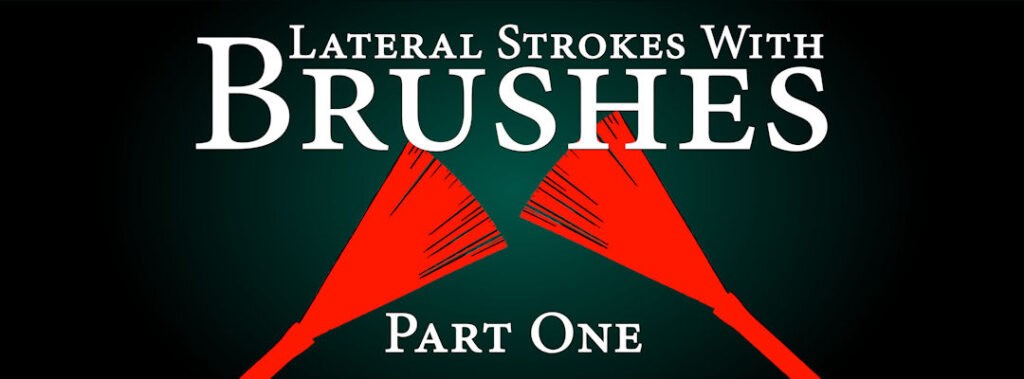Jazz Brushes Technique: Lateral Strokes (part two)

In the first installment of this two-part post on jazz brushes I explained how to produce long and short strokes with lateral motions, and I promised that today I would introduce ways to use this technique musically and creatively. Here I am to keep my word and share with you a few ideas.
Before reading further please review part one!
Jazz Brushes Technique: Lateral Strokes (part one)

Back in September I wrote a post titled “An Introduction to Brushes”, where I examined how to produce long legato sounds using circular motions, an essential part of jazz brushes technique.
In this post I will describe another important area of brush playing: staccato sounds. The techniques that we are going to explore provide many interesting sound options, brushes have endless possibilities, and because different contexts call for different approaches, having an array of options is a good thing!
Improving Your Time and Rhythm: The Foundations of Musical Expression

As a developing musician, improving your time and rhythm is one of the most important technical aspects to prioritize, regardless of what instrument you play. After all, it is thanks to time that we can make sense of music, and if we didn’t organize it in some fashion (rhythm), all we would hear would be a random collection of sounds.
An introduction to brushes

I love brushes.
Brushes are more than a tool with which one plays the drums; they are an instrument in their own right. Brushes are used in different music styles, but their most extended applications are found in jazz.
Most people outside the world of jazz identify brushes with ballads and mellow or folksy tunes, but those who are more familiar with them know the wide range of moods that brushes can facilitate.
